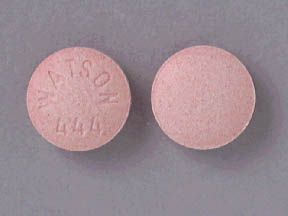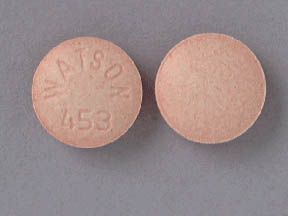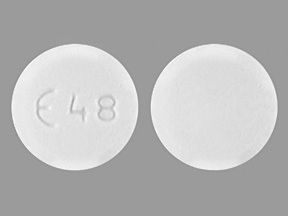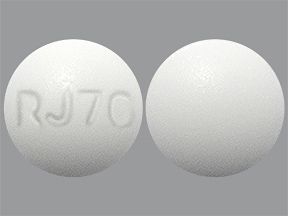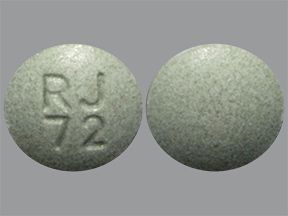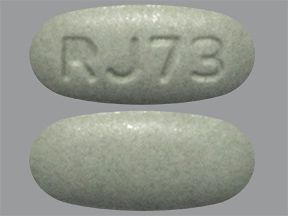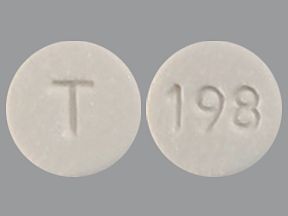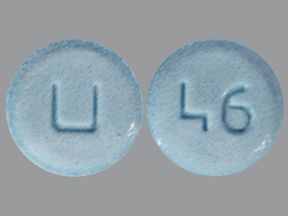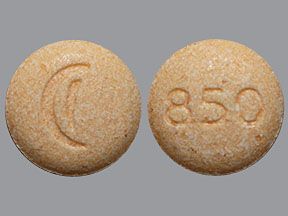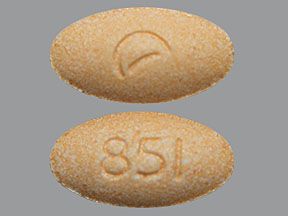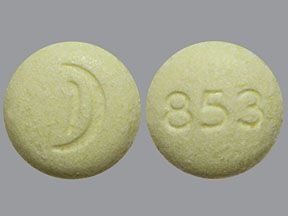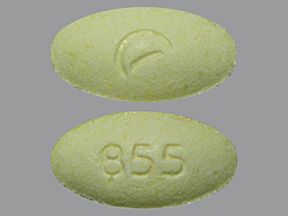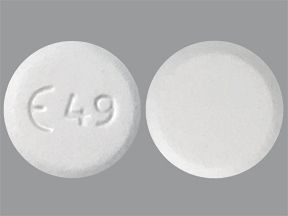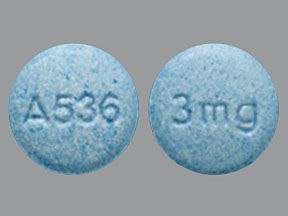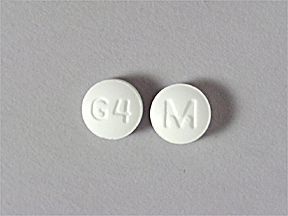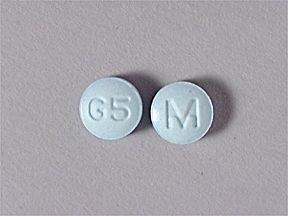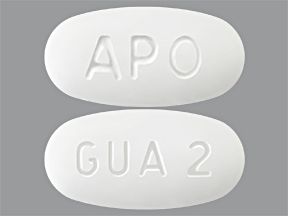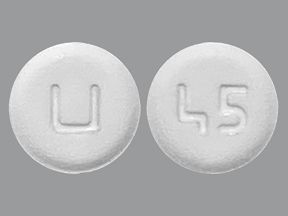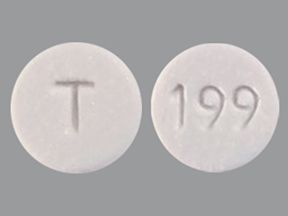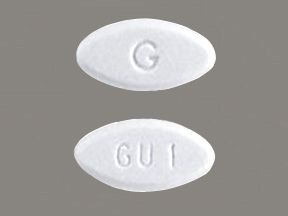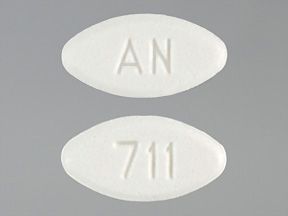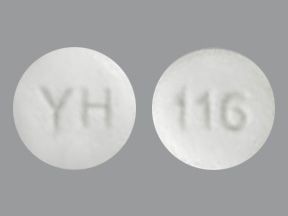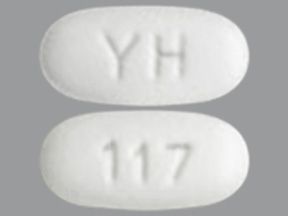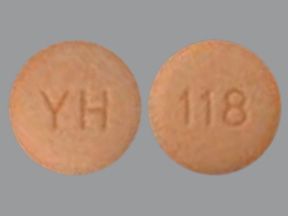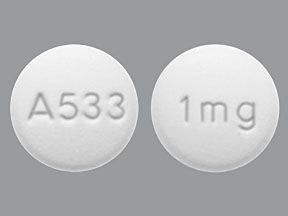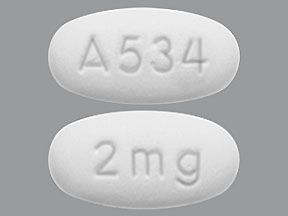Highlights for guanfacine
- Guanfacine immediate-release tablets come as a brand-name drug and a generic drug. Brand name: Tenex.
- Guanfacine comes in two forms: an oral immediate-release tablet and an oral extended-release tablet.
- Guanfacine immediate-release tablets are used to help lower your blood pressure.
- Sedation warning: This drug can make you drowsy and less alert. Sedation is more likely to happen early in treatment or when your dosage increases. Don’t drive a car, use machinery, or do similar activities that require alertness until you know how guanfacine affects you.
- Alcohol warning: Avoid drinking alcohol while taking guanfacine. Your tolerance to alcohol may be reduced, which will increase its effects. Alcohol can also make guanfacine stay in your body longer. This could lead to worse side effects from the drug.
- Warning for stopping the drug: Don’t stop taking guanfacine without talking to your doctor first. This medication needs to be stopped slowly. Your doctor may gradually decrease your dosage. If you stop taking it abruptly, it can cause your blood pressure to go up too high.
Guanfacine is a prescription drug. It comes in two forms: an oral immediate-release tablet and an oral extended-release tablet.
Guanfacine immediate-release tablet is available as the brand-name drug Tenex. It’s also available as a generic drug. Generic drugs usually cost less than the brand-name version. In some cases, they may not be available in every strength or form as the brand-name drug.
Guanfacine immediate-release tablet may be used as part of a combination therapy. That means you may need to take it with other drugs.
Why it’s used
Guanfacine immediate-release tablets are used to help lower your blood pressure. Having high blood pressure can lead to serious health conditions, such as heart attack and stroke.
How it works
Guanfacine immediate-release tablet works by helping to open your blood vessels. This helps lower your heart rate and blood pressure.
Guanfacine immediate-release tablet belongs to a class of drugs called central alpha 2A-adrenergic receptor agonists. A class of drugs is a group of medications that work in a similar way. These drugs are often used to treat similar conditions.
Guanfacine immediate-release tablet may cause sedation, especially early in treatment or when your dose is increased. Don’t drive a car, use heavy machinery, or do similar activities that require alertness until you know how this drug affects you.
More common side effects
The more common side effects that can occur with guanfacine are:
- dry mouth
- sleepiness
- dizziness
- constipation
- weakness
- headache
- trouble sleeping
If these effects are mild, they may go away within a few days or a couple of weeks. If they’re more severe or don’t go away, talk to your doctor or pharmacist.
Serious side effects
Call your doctor right away if you have serious side effects. Call 911 if your symptoms feel life-threatening or if you think you’re having a medical emergency. Serious side effects and their symptoms can include the following:
- Skin rash with peeling skin. If you experience a rash, stop taking guanfacine and call your doctor.
Disclaimer: Our goal is to provide you with the most relevant and current information. However, because drugs affect each person differently, we cannot guarantee that this information includes all possible side effects. This information is not a substitute for medical advice. Always discuss possible side effects with a healthcare provider who knows your medical history.
Guanfacine immediate-release tablet can interact with other medications, vitamins, or herbs you may be taking. An interaction is when a substance changes the way a drug works. This can be harmful or prevent the drug from working well.
To help avoid interactions, your doctor should manage all of your medications carefully. Be sure to tell your doctor about all medications, vitamins, or herbs you’re taking. To find out how this drug might interact with something else you’re taking, talk to your doctor or pharmacist.
Examples of drugs that can cause interactions with guanfacine are listed below.
Drugs that affect CYP3A4 enzyme
CYP3A4 is an enzyme that helps your body process drugs. Some drugs slow down the enzyme’s ability to process drugs such as guanfacine. These drugs are known as CYP3A4 inhibitors. Other drugs speed up the enzymes ability to process drugs. These drugs are known as CYP3A4 inducers.
If you’re taking a CYP3A4 inhibitor, your dosage of guanfacine may be lowered to half the regular dosage. If you stop taking the drug, your dosage of guanfacine will be increased to the regular dosage.
If you’re taking a CYP3A4 inducer, your dosage of guanfacine may be double the regular dosage. If you stop taking the drug, your dosage of guanfacine may be lowered over 1–2 weeks.
Examples of these drugs include:
- CYP3A4 inhibitors:
- Clarithromycin
- Erythromycin
- Ketoconazole
- Itraconazole
- Diltiazem
- Verapamil
- CYP3A4 inducers:
- Rifampin
- Phenobarbital
- Phenytoin
- Carbamazepine
- St. John’s wort
Drugs that slow brain activity
Taking guanfacine with other medications that slow brain activity can lead to increased sleepiness and mental slowing. Examples of these other drugs include:
- benzodiazepines, such as:
- lorazepam
- diazepam
- opioid pain medications, such as:
- morphine
- codeine
- sleep medications, such as:
- zolpidem
- eszopiclone
Disclaimer: Our goal is to provide you with the most relevant and current information. However, because drugs interact differently in each person, we cannot guarantee that this information includes all possible interactions. This information is not a substitute for medical advice. Always speak with your healthcare provider about possible interactions with all prescription drugs, vitamins, herbs and supplements, and over-the-counter drugs that you are taking.
This drug comes with several warnings.
Allergy warning
This medication may cause an allergic rash. If you develop a rash, stop taking guanfacine and call your doctor.
Don’t take this drug again if you’ve ever had an allergic reaction to it. Taking it again could be fatal (cause death).
Alcohol interaction warning
Avoid drinking alcohol while you’re taking this medication. Your body processes alcohol and guanfacine in similar ways. That means that if you drink alcohol, this drug might take longer to leave your body. You could experience worse side effects.
Also, guanfacine may lower your tolerance to alcohol, meaning you’ll feel the sedative effects of alcohol more quickly. This can be dangerous and includes symptoms such as slowed reflexes, poor judgment, and sleepiness.
Warnings for people with certain health conditions
For people with kidney disease: Having kidney disease may cause guanfacine to build up in your body, which may cause serious side effects. Your doctor may reduce your dosage of this drug if you have serious kidney disease.
For people with liver disease: Having liver disease can cause guanfacine to build up in your body, which may cause serious side effects. Your doctor may reduce your dosage of this drug if you have serious liver disease.
For people with heart problems: Guanfacine can affect your heart and blood vessels. Tell your doctor if you have heart problems, such as a history of heart attack or stroke.
Warnings for other groups
For pregnant women: Guanfacine immediate-release tablet is a pregnancy category B drug. That means two things:
- Studies of the drug in pregnant animals haven’t shown risk to the fetus.
- There aren’t enough studies done in pregnant women to show the drug poses a risk to the fetus.
Tell your doctor if you’re pregnant or plan to become pregnant. Guanfacine should be used during pregnancy only if the potential benefit justifies the potential risk.
For women who are breastfeeding: It isn’t known if guanfacine passes through breast milk. If it does, it could cause side effects in a breastfeeding child. You and your doctor may need to decide whether you’ll take guanfacine or breastfeed.
For seniors: Guanfacine immediate-release tablet hasn’t been studied in people over the age of 65 years.
For children: Guanfacine immediate-release tablet hasn’t been proven to be safe and effective in people younger than 12 years old. It isn’t recommended for this age group.
All possible dosages and forms may not be included here. Your dose, form, and how often you take it will depend on:
- your age
- the condition being treated
- how severe your condition is
- other medical conditions you have
- how you react to the first dose
Dosage for high blood pressure
Generic: Guanfacine
- Form: oral immediate-release tablet
- Strengths: 1 mg, 2 mg
Brand: Tenex
- Form: oral immediate-release tablet
- Strengths: 1 mg, 2 mg
Adult dosage (ages 18 years and older)
- Typical starting dosage: 1 mg taken at bedtime.
- Dosage increases: Your doctor may increase your dosage after a couple of weeks to help you bring your blood pressure down to goal.
Child dosage (ages 0–17 years)
A safe and effective dosage hasn’t been established for this age group.
Special dosage considerations
For people with kidney disease: Guanfacine is cleared from your body by your kidneys. Your doctor may need to reduce your dosage if you have serious kidney disease so the drug doesn’t build up in your body and cause dangerous side effects.
For people with liver disease: Guanfacine is cleared from your body by your liver. Your doctor may need to reduce your dosage if you have serious liver disease so the drug doesn’t build up in your body and cause dangerous side effects.
Disclaimer: Our goal is to provide you with the most relevant and current information. However, because drugs affect each person differently, we cannot guarantee that this list includes all possible dosages. This information is not a substitute for medical advice. Always speak with your doctor or pharmacist about dosages that are right for you.
Guanfacine immediate-release tablet is used for long-term treatment. It comes with risks if you don’t take it as prescribed by your doctor.
If you miss doses or don’t take it on schedule: Your condition may not improve and may even get worse.
If you stop taking it suddenly: You may experience an increase in blood pressure, which can be dangerous for your health. Talk to your doctor before stopping this medication.
If you take too much: You may experience serious side effects, including:
- drowsiness
- low energy
- low heart rate
- low blood pressure
If you think you’ve taken too much of this drug, call your doctor or local poison control center.
If your symptoms are severe, call 911 or go to the nearest emergency room right away.
What to do if you miss a dose: If you miss a dose, take it as soon as you can. However, if it’s just a few hours until your next dose, skip the missed dose and take the next dose on schedule.
Never try to catch up by taking two doses at once. This could result in dangerous side effects.
Keep these considerations in mind if your doctor prescribes guanfacine immediate-release tablet for you.
General
- Guanfacine may cause drowsiness. It’s usually recommended that you take it at bedtime.
- You can cut or crush the immediate-release tablet.
Storage
- Store this drug at room temperature between 68°F and 77°F (20°C and 25°C).
- Keep this drug away from light and high temperature.
- Don’t store this medication in moist or damp areas, such as bathrooms.
Refills
A prescription for this medication is refillable. You should not need a new prescription for this medication to be refilled. Your doctor will write the number of refills authorized on your prescription.
Travel
When traveling with your medication:
- Always carry your medication with you. When flying, never put it into a checked bag. Keep it in your carry-on bag.
- Don’t worry about airport X-ray machines. They can’t harm your medication.
- You may need to show airport staff the pharmacy label for your medication. Always carry the original prescription-labeled container with you.
- Don’t put this medication in your car’s glove compartment or leave it in the car. Be sure to avoid doing this when the weather is very hot or very cold.
Clinical monitoring
Your doctor may monitor your blood pressure at your appointments. You can also check your blood pressure at home. If you’re checking your blood pressure at home, it’s helpful to keep a log of the date, time of day, and your blood pressure reading. Bring this log with you to your doctor visits.
There are other drugs available to treat your condition. Some may be better suited for you than others. Talk to your doctor about other drug options that may work for you.
Disclaimer: Healthline has made every effort to make certain that all information is factually correct, comprehensive, and up-to-date. However, this article should not be used as a substitute for the knowledge and expertise of a licensed healthcare professional. You should always consult your doctor or other healthcare professional before taking any medication. The drug information contained herein is subject to change and is not intended to cover all possible uses, directions, precautions, warnings, drug interactions, allergic reactions, or adverse effects. The absence of warnings or other information for a given drug does not indicate that the drug or drug combination is safe, effective, or appropriate for all patients or all specific uses.

